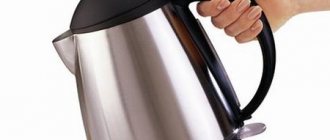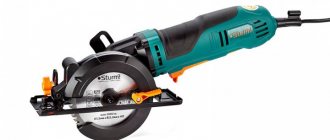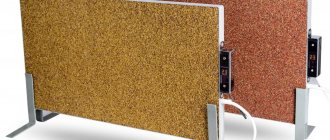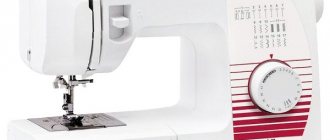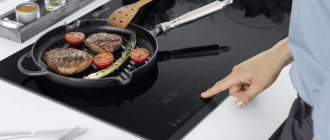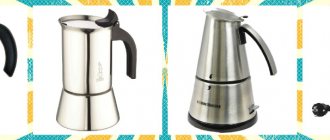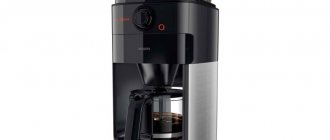A drill is a popular tool in the home. With the help of such a device, you can tidy up furniture and hang a picture in a short time. A universal tool can be of varying power. In order to understand how to choose a drill, you need to study the basic criteria and popular models.
Drill - a universal device for the home
The purpose of the drill, the difference from a hammer drill and a screwdriver
When choosing a device, you must first consider the scope of use. The tool can be used both in the apartment and in the country. The device will also be indispensable in the garage and small workshop. The drill can be used for the following purposes:
- drilling holes in concrete and brick walls;
- drilling in wooden surfaces;
- screwing in and removing bolts;
- metal drilling.
Depending on the power of the device, you can drill any surface. Therefore, such equipment will become indispensable during repairs.
Important! For universal use of the tool, users often purchase additional attachments.
The tool is used for drilling hard materials.
A screwdriver, unlike a drill, can unscrew bolts at different speeds, and can even cope with stuck specimens.
Some models come with an impact function, so they are often used instead of a hammer drill. However, it must be taken into account that a drill is not used for long-term drilling of concrete. For such purposes, it is necessary to purchase a hammer drill. The difference between the devices is that a drill drills, and a hammer hammer chisels and allows you to get large holes.
The best hammerless drills
Metabo BE 650 (BZP)
Used for drilling holes in a wide variety of materials. A convenient advantage is that you can quickly change the drill.
- Max drilling diameter: 13 mm;
- power: 650 W;
- max. speed: 2800 rpm.
DIOLD MES-5-03
DIOLD MES-5-03 is among the top quality electric drills. Attracts users with power and light weight.
- Max drilling diameter: 13 mm;
- power: 800 W;
- max. speed: 1200 rpm.
AEG BE 750 R
The long cord eliminates the need for extension cords, giving the advantage of freedom of movement.
- Max drilling diameter: 13 mm;
- power: 750 W;
- max. speed: 3000 rpm.
Selecting a drill class
When choosing a suitable device, you need to know what types of drills there are. The type of device depends on the purpose of use and the material to be processed.
Household
Household drills are suitable for home use. They can be rechargeable or powered by electricity. Household appliances have average power and are easy to operate. Even women can use the devices without damaging their manicure. Since the handles are comfortable, and the tool works at different speeds.
Professional
Professional devices are used in workshops or enterprises. They have high power and cope with materials of various densities. The advantage of the professional model is that you can use the drill for 8-9 hours without a break. Household devices are not intended for such purposes.
Professional models are often used in enterprises
Semi-professional
Ideal for home use. Suitable for cottages and garages. It has good engine power and is suitable for operating time up to 5-6 hours.
What is a drill
Available in a number of versions based on key characteristics. The usual kit includes an additional side-mounted handle and a chuck for standard drills. A number of models are produced for timber and its processing, and a certain design is available for dowels and their installation. A drill can be used to drive piles into the ground.
In this case, the pile is installed using equipment driven by a conventional gear drill. The pile must be screw.
There is a regular drill (this also includes a dowel and a hand drill), an impact drill, a mixer drill, and a drill-driver. Not a single production, construction or repair can be done without it.
Most often, the design is with a gearbox, while pneumatic ones are without them.
Prices range from affordable for household machines to high for highly professional tools. Materials for manufacturing: high quality plastic and metal. Controls - from the simplest buttons to electronic units.
Types of drills by purpose
In order to understand how to choose a drill, you need to study all the types. Each type of device has its own distinctive points that must be taken into account.
Regular drill
A useful device that has universal application. Designed for drilling holes in materials such as wood, plastic, thin metal. They work both from the mains and from batteries.
Impact drill
The device is equipped with a striking element. Therefore, it easily copes with hard materials such as concrete and metal. It can perform some functions of a hammer drill, but is not used for a long time without stopping.
Drill/driver
If you need to choose a useful device for the garage or small workshops, you should pay attention to a similar product. Using the device, you can unscrew complex screws and bolts. However, such a device is not suitable for drilling hard materials.
Drill/driver suitable for auto repair shops
Drill mixer
The ideal solution for construction work. The device has medium power and can be used for drilling holes. The kit includes special nozzles for mixing the compositions. Therefore, using a drill, you can mix a solution or putty in a short time.
Angle drill
The tool is used most often during construction work. Allows you to reach the most difficult places. An electric angle drill has average power and is often purchased only when necessary.
Tools
0 votes
+
Vote for!
—
Vote against!
For a man with hands, a drill is the most important tool in the house. Fastening a screw quickly and reliably, hanging a picture, repairing furniture - all these small jobs are difficult to do without a drill. But drills also come in different shapes, purposes, prices, and a host of other parameters.
A drill is a tool, electric or battery-powered, that is necessary for drilling holes in dense materials: wood, stone, concrete, metal.
Content
- What types of drills are there?
- Types of drills
- Where to buy a drill
- Drill attachments
- Brands of existing drills
What types of drills are there?
All drills are divided into household and professional . The principle of operation is the same for everyone. The difference is in power, drill speed, diameter of the hole formed, service life and price. In specialized power tool centers you will be offered semi-professional drills. These are transitional models. If they are household, then they have properties inherent in professional ones. If they are professional, then, on the contrary, they lack any components, but are of excellent quality and long-lived.
Which drill to choose depends on its purpose. You can buy an excellent, powerful tool that can work for days and not break under heavy loads, keep it in its packaging, taking it out once a year to drill a hole for a screw to hang another photo in the kitchen. A considerable sum spent in such a case was spent completely in vain. You can buy a small, lightweight tool and not let it go out of your hands, because repairs have become your job, but you often have to swear, indignant at a drill that quickly breaks down, which is also not an option.
For periodic, household work, it is still more appropriate to buy a household drill; its price will not shock the family budget. And if the drill is used more than three or four times a year, it is worth purchasing a professional tool.
Types of drills
The drill was invented quite a long time ago. Initially it was manual, i.e. the work of the drill directly depended on how much effort the master applied when turning the handle. Now the hand drill is a thing of the past. Older models have been replaced by electric and cordless drills. The first one runs on mains power, the second one uses replaceable batteries. In general, there are the following types of drills:
- hammer drill
- hammer drill
- regular drill
- screwdriver (cordless drill)
A rotary hammer is classified as a professional drill. This is a large, powerful, heavy tool that is designed for chopping walls and drilling holes in concrete, stone, brick, as well as chipping excess material, such as removing old tiles. The main job of a hammer drill is to hammer. It features high impact energy, large bore diameter, long service life and increased price. This is a tool for construction professionals.
An impact drill has slightly lower characteristics than a hammer drill, but is also a professional tool. It is used when drilling holes in stone, brick, and concrete. The drill bit of such a drill is capable of cutting through such materials, since there are two ratchets inside it that connect to each other during operation. One is located inside the drill, the second is attached to the rotating chuck. When drilling, a drill with their help acquires a chiseling (or impact) function, which, by the way, can be turned off if there is no such need. Operates from mains and batteries. An impact drill is easy to use, it is lighter than a hammer drill, and predominantly Pobedit drills are used to work with it. In terms of price, such a drill is almost two times cheaper than a rotary hammer, but more expensive than a regular drill.
A regular drill differs from an impact drill in that it does not have a hammer function; therefore, it cannot drill metal, concrete and brick, only wood. This is a household drill, which is good in a wooden house, in a country house, for small work in a barn, garage, and when assembling furniture. It can be electric or battery-powered. The first is convenient because it works for a long time, and the second can be carried to any distance and drilled where there are no electrical outlets at all.
A screwdriver is even simpler - a tool necessary for driving screws at a construction site, in repairs, and in furniture assembly. This is not exactly a drill, but it works on the same principle of rotating mechanisms. This is a battery powered tool.
A man who is economical and prone to frequent repairs prefers to have a drill and a screwdriver in the house, since the tasks of these tools vary.
Where to buy a drill
If we usually buy a fashionable coat in a store, and fresh meat at the market, then with a drill everything is more complicated. You can buy a drill at hardware stores, power tools stores, hypermarkets, and from others. Each option has its pros and cons.
Buying second hand, that is, purchasing a tool that has already been used, has the advantage of a price and an owner who knows the principle of operation and all the parameters (for reference). The downside is that there is no warranty on the tool. If such a drill was in the package and used 2-3 times, it will serve you faithfully for a long time. But a tool that has been working every day for a long time, has used up its entire safety margin, or has been lying in a damp, cold garage or barn, will quickly break and will not justify its price, even a small one.
Hypermarkets and home improvement stores provide serviceability and a guarantee of quality, but here you will not get competent instructions and practical advice on choosing a brand or model. In such stores, the goal of the seller is to sell the goods, and these sellers themselves are far from being professionals in the construction business. And you can't beat the price.
A good drill that is right for you, according to your requirements and needs, can be found in small electrical goods stores. As a rule, managers here are competent people and will not give bad advice. True, there is also a minus: often the suppliers of these stores are certain companies, so the choice of brands here is limited to two or three names. But there is a quality guarantee, and you will learn the characteristics of the tool from professionals.
Drill attachments
The rotating mechanism of a drill is often used not only for drilling, but also in other areas, sometimes very far from construction and repair. There are special drill attachments that perform a variety of jobs. They clean the surfaces of building materials, grind, polish, mix solutions, and even cut out the necessary parts like a jigsaw.
Professional attachments:
- limiters (nozzles that maintain the angle and depth of drilling)
- device for blowing sawdust
- accessories for mini-drill (collet chuck)
Attachments for other purposes:
- circle cutters (for cutting circles from plywood, hardboard and other materials)
- flap attachment for grinding
- surface grinding (often rubber) attachment
- felt attachment for sanding and polishing
- nozzles of different properties for driving screws (angular, tetrahedral, magnetized, cross-shaped)
- for plucking poultry (significantly facilitates the work of the poultry farmer):
Brands of existing drills
In the construction goods market, manufacturers are competing for their customers. A drill, especially if it is a professional tool, tends to fail. The cost of repairs, the ability to purchase spare parts and service life influence consumer opinion, which is why competing brands are constantly improving their tools so as not to lose their leadership positions.
In terms of cost and set of functions, the most expensive are professional drills from Metabo , HILTI and DeWalt . They cost from about 2,500 to several tens of thousands of rubles. But they also deserve their money - reliable, strong, functional, durable, absolutely irreplaceable tools for a master.
The majority of companies focus on the production of good tools, but with fewer capabilities and slightly less expensive, costing from 2 to 6 thousand rubles, but impeccable in quality and operating time. This market segment includes a Bosch drill (one of the favorite companies in the construction business; many experts try to purchase other tools from the same manufacturer). Thus, the GBM 6 RE Professional is designed for drilling small holes, while the GBM 32-4 Professional is distinguished by its performance, has four speeds and is very reliable even under heavy loads.
Another notable brand is the Makita drill, which is an impact drill made for professionals. Most of the drills of this brand have a metal body and double protective insulation of the motor. This guarantees a decent working life. There are also two types of chucks, quick-release and serrated, which undoubtedly expands its application.
And, of course, Japanese quality exists not only in cars, but also in power tools. An excellent Hitachi drill - the object of desire of many craftsmen - is distinguished by its properties and elegant shape, even of a heavy tool. Ergonomics, compactness, light weight, reliability – that’s all about it. The drill motor is special, invented and patented by this company.
The Skill impact drill is much more affordable . This brand, like the Spark , is less popular, but has good properties. They are usually purchased for household work and repairs in an apartment or country house. They cost about 1500-2000 rubles. The downside is the cost and availability of parts - if a drill breaks, it is cheaper to buy a new one than to repair it.
All this ranking is quite arbitrary, because each instrument is like an extension of the master’s hand, and each master has his own hand. One person likes the hitachi best, while the other has had an interskol drill , a lightweight, convenient tool, with a rubber lining, good equipment and excellent performance characteristics.
Main characteristics
In order to understand how to choose a drill for home use, you need to take into account the criteria that make the process of use comfortable.
Power
One of the main characteristics that must be taken into account when choosing a drill is power. At home, models with a power of 1000 W can be used. Using such a device, you can drill holes even in hard places. For professional use, you need to choose tools with a power of 1500 W.
Power type
When choosing a device, you need to consider the conditions under which the drill will be used. Portable and networked devices can be found on sale.
Network
Drills that operate on mains power have high power and are most often used in workshops and in the country. The advantage of such a device is the ability to work for a long period and cope with hard materials.
Rechargeable
Battery models are most often chosen if it is necessary to carry out work in places where it is not possible to connect to the network. The devices are small in size and have average power. They are powered by high-capacity batteries, which are enough for several hours of continuous drilling.
Battery-powered models allow you to work away from home
Shaft rotation speed
In order to purchase a quality device, you need to know how many revolutions the drill has. The speed of revolutions can be adjusted. Semi-professional models most often have a shaft rotation speed of up to 3500 rpm. This indicator allows you to process all types of materials.
Shaft speed switch
High-quality models have a speed control function and allow you to make the drill a universal tool.
Drilling diameter
Each model has specific recommendations for the diameter of the drills used. If you use more drills than specified in the instructions, the device may become unusable. Most often, the kit includes drills with a diameter from 0.3 mm to 30 mm.
Chuck type
There are several types of chucks: key chucks and quick-release chucks. In the first case, to change the drill, you need to unscrew the chuck with a wrench. In the second case, the drill is fixed with a chuck on a latch.
Important! Experts say that models with a key cartridge last longer and are suitable for hard materials.
Ergonomics
In order to select the right drill, you need to hold the device in your hand. The device should fit comfortably in the palm of your hand and should not strain your hand when working. Thus, the user will be able to work for a long period in the desired position without load.
The best impact drills for quality and reliability
Interskol DU-16/1000ER
These inexpensive drills are the best in terms of price and quality. Can make holes in various materials.
- Max drilling diameter: 13 mm;
- power: 1000 W;
- max. speed: 2500 rpm.
Makita hp1640k
This Chinese device is one of the most popular in the top. It weighs little, so it will be easy for both men and women to work with it.
- Max drilling diameter: 13 mm;
- power: 680 W;
- max. speed: 2800 rpm.
BOSCH GSB 1600 RE BZP
A popular German company will be able to pleasantly surprise you. This tool model will last for more than one year.
- Max drilling diameter: 13 mm;
- power: 700 W;
- max. speed: 3000 rpm.
DeWALT DWD024
The rating of electric drills cannot be imagined without this position. The manufacturer allows you to choose the rotation speed, which makes use much easier. Long quality cord.
- Max drilling diameter: 13 mm;
- power: 750 W;
- max. speed: 2800 rpm.
What else to consider when choosing a drill
When choosing a device, in addition to the basic characteristics, it is necessary to take into account additional ones. These include:
- fixing the power button. This characteristic allows you to ensure safe operation of the device;
- Auto shut-off function. The presence of this function prevents the drill from burning out during prolonged use. If the device gets hot, it automatically turns off;
- backlight Allows you to make a hole accurately, even in a dark room;
- dust collector Makes it easier to clean the room later.
Also, additional criteria include the presence of attachments. A second handle will not be superfluous, with the help of which it will be convenient to work in hard-to-reach places.
Additional features make the tool convenient to use
Household and professional tools
Based on the expected load and intensity of use, drills can be divided into household and professional. For the manufacture of the latter, special designs and materials are used that have an increased ability to resist wear. This allows the device to work flawlessly for several hours on end.
Household tool models are characterized by less wear resistance and relatively easy assembly. But such drills are much cheaper than professional equipment and are considered a good option for use at home.
Features of choosing a tool for working on concrete
To understand what a concrete drill is and which one to choose, you need to consider the following expert advice:
- the instrument must be of the impact type;
- to obtain a neat hole, it is necessary to have a function for adjusting the speed of operation;
- presence of two handles. During operation, the tool must be held firmly; this is difficult to do with just one handle.
It is necessary to select devices with high power. Since the concrete coating is dense and cannot be drilled with ordinary drills.
Kinds
Currently, there are a large number of types of electric drills on the market.
Drills differ from each other primarily in the design of the gearbox and purpose.
The main types of these tools are:
- Regular drills. They are distinguished by their compactness and lightness. These devices can be used for drilling materials such as wood, metal or plastic. As a rule, conventional drills have functions for setting speed and receiver.
- Impact drills . Their distinctive feature is the presence of a modified gearbox with additional two gears. Due to the rotation of the engine, not only the transmission of revolutions to the cartridge occurs. The device can perform reciprocating movements. Because of this, a chisel effect occurs.
- Mixer type drills . Such devices are distinguished by an enlarged gearbox. Despite the considerable power of these devices, they have very low rotation speeds. This is facilitated, among other things, by the mass of similar drills. They are intended mainly for mixing mortars.
- Screwdriver type drills . They can be used not only for drilling, but also for tightening or unscrewing screws. The main feature of such devices is a significant range of rotational speed settings.
Expert opinion
Kuznetsov Vasily Stepanovich
All of the above drills are in demand. They differ from each other not only in technical characteristics, but also in operational capabilities.
Rating of electric drills
Among the large assortment of electric drills, it is necessary to highlight models that have repeatedly proven their quality.
DIOLD MES-5-01 BZP 550 W
The model has an affordable price.
The inexpensive model is easy to use and has a power of 550 W. Ideal for home use. The chuck is key, allows you to firmly fix the drill. The user will be able to independently set the shaft rotation speed, depending on the material being processed.
The cost of the device is only 1600 rubles.
Makita HP1640 680 W
The impact model is equipped with two handles for comfortable work.
An impact tool with good power will be an ideal option for a small workshop or garage. Two comfortable handles make work easy. The power of the device is 680 W, the speed of rotation can be adjusted independently.
The model has a drilling depth limiter.
Cost 4000 rubles.
For reference! Makita offers a wide range of models, depending on user requirements.
BISON ZSSh-300-2, 300 W
The tool has compact dimensions.
The drill-screwdriver has compact dimensions and universal use. Despite the low power of only 300 W, it is very popular. The speed can be adjusted, the body does not heat up even during long-term operation.
Cost 3000 rubles.
Makita DA3010F 450 W
The tool is suitable for hard-to-reach places.
The device has compact dimensions and convenient backlighting. Using a drill you can get to the most difficult places. Power 450 W. Suitable for cutters of various diameters. It is also necessary to pay attention to the low weight, only 1.4 kg, so the device can be operated with one hand.
Cost 16,000 rubles.
BOSCH GSB 13 RE
The tool is safe to use.
The impact model is semi-professional and is often used in workshops. The power of the device is 600 W, so the tool quickly copes with hard materials. The device is equipped with a power lock button and a drilling depth limiter.
Cost 4000 rubles.
When choosing an electric drill, you need to carefully study the popular models. In order for the tool to serve for a long period, important criteria and expert advice should be taken into account.
Features of the drill body
Drill bodies of various types are made of plastic or metal, and this parameter significantly affects the weight of the drill. So, all metal products are quite heavy, but they are durable, reliable, and resistant to damage.
Features of using drills made of different materials:
- To carry out small repairs on your summer cottage, a plastic drill will be sufficient.
- Metal drills will be appreciated by those craftsmen who work in difficult conditions, where plastic can be scratched, chipped, or exposed to high temperatures.
- When working on high objects, both plastic and metal drills are used. In this case, the opinions of the masters differ greatly. A tool that is too heavy will be difficult to hold at a height, and with a plastic tool the work will go faster. At the same time, even if dropped from a small height, the fragile case will probably break.
Drills with a metal body are reliable
Tips for choosing
Power selection
So how do you choose a good drill? Will a household option be sufficient or should I choose a more powerful one? The average power of the instrument varies between 500-900 W. This power will be more than enough, especially if you do not need to constantly mix a large amount of any mixture or drill a lot of large holes. However, if you still have to do such work, you will have to fork out for a more powerful device. Here we can definitely say that more powerful torques will allow you to cope with significant loads while drilling large holes. It is worth keeping in mind one more point: when the power of the tool increases, its weight also increases. That is why for ordinary household work it is worth choosing a model that will have a power of 600-700 W.
Operating speed
Typically, corded drills have information about the shaft rotation speed, both under load and at idle, in the manufacturer’s data sheet. There is only one dependence here - the higher the speed, the smoother your holes will be. With low power, household models, due to their high rotation speed, have more capabilities. This parameter will be indispensable when grinding and polishing any surfaces, as well as when carrying out impact work. But on the other hand, it will not be possible to tighten the fasteners at high speed; for this it is better to use 400-500 rpm. It is for this reason that you need to choose a model with speed control.
Permissible drilling diameter
The dimensions of the maximum holes that the tool can drill are usually indicated in the manufacturer's data sheet for 3 types of materials, namely wood, metal and concrete. Sometimes it happens that only wood and steel are indicated. And if you want to choose a model with an impact function, then pay attention to the diameters of the holes in the brick or stone. Along with the types of materials, the permissible drill diameter is also prescribed. The maximum dimensions are usually 25 centimeters, and the minimum 0.6 cm.
Chuck type
This structural element of the drill can be either with a key clamp or with a quick-release clamp. Let me explain. A chuck with a key clamp can only be opened and closed using a special key. On the one hand, this is a minus, since the key is sometimes lost, but on the other hand, it will be fixed very reliably. That is why the most powerful models use this type of cartridge. Impact drills are also equipped with it, since during operation they experience significant loads. Quick-release chucks are more convenient to use and do not require additional accessories. They are very easy to use. However, they have their drawbacks, namely they are susceptible to faster failure.
Another important characteristic is the maximum seating diameter of the cartridges. There is no minimum limitation here, since the cartridge, if necessary, can be waited to 0, but in practice it is not necessary to compress less than 1.5 mm. The maximum diameter for clamping in a chuck can be 16 mm. What kind of chuck are supplied to the most powerful drills? Models with average parameters are equipped with a 13 mm chuck, and the most low-power and lightest devices are equipped with a 10 mm chuck.
Speed controller
This feature is a very useful thing especially when you need to both make holes and tighten fasteners. After all, as you already understood, it is better to drill at high speed, and it is better to tighten fasteners at lower speeds. The maximum number of speeds for a drill is 8, there are no more.
An electronic speed switch will be especially useful. It allows for smooth adjustment. For these purposes, either a thyristor or a rheostat is used. If they are present, the drill start button will be sensitive to pressure. This means that if you press harder, the speed will increase, but if you press less, it will correspondingly decrease.
Some expensive models have stabilization of rotation speed under load. For these purposes, the engine power reserve is used. This function allows you to adjust the device to work with a specific type of material. In addition, the possibility of the chuck jamming when the drill is overloaded is completely eliminated.
Possibility of soft start
The most powerful drills are usually equipped with this feature, allowing the main shaft to be accelerated from minimum to maximum speed. A special feature will be that there will be no jerks during acceleration. There will also be no power overload and errors during drilling.
Possibility of fixing the button
This feature is also very convenient. This is explained by the fact that during operation you will not have to strain your hand on the button all the time. In addition, you can turn a drill into a drilling machine if you fix it on a stand.
Nuances when choosing
When figuring out how to choose the right drill, you need to not only study its parameters. It is important to hold the tool in your hands and make sure that it will fit comfortably in your hand during use. It is worth studying the handle of the drill, namely how comfortable it will be to hold. After all, you will probably agree that some will find a thicker handle more comfortable, while others will find a thinner one. In addition, the presence of corrugated linings may also not please everyone.
It's also worth checking out the tool's canopy to see if it will be too heavy for you. For some, it will be more comfortable to work with a handle that is slightly forward.
Be sure to check all the buttons and knobs. When turned on, they should not be pressed with force and should move smoothly. You should also make sure that there is no play in the spindle. A big plus will be the ability to fix the drill on a stationary stand.
Selecting a drill configuration
When thinking about how to choose the right drill, you should definitely study the package contents of the cases in which the drills are sold. The thing is that in addition to the drill itself, the sets can be equipped with various accessories. Almost immediately you can choose a model that comes with additional drills, a metal depth stop, and a spare chuck. After all, you will probably agree that buying these things separately will be expensive, and besides, you will have to spend your time searching. It will be much easier and cheaper to buy it all together.
We recommend reading:
- How to choose a hammer drill;
- Choosing a wall chaser;
- How to choose an angle grinder
Which brand of drill is better?
When reviewing the choice of drills, it is necessary to talk about their manufacturers - which are better, which are worse and why.
If we talk about which manufacturers are better, then we should start from dividing all power tools into classes: industrial, professional, semi-professional and household. These terms themselves are conventional; for convenience, they were invented among trade organizations selling power tools, so that it could be clearly explained which tool is suitable for round-the-clock use (industrial), for daily long-hour use (professional), for work several times a week (semi-professional) and for rare use every now and then (household). Well, all manufacturers, depending on their reliability and durability, were divided into these classes. Moreover, it just so happens that a certain manufacturer produces tools only of a certain class. Except that Bosch makes both professional and household tools. True, they have different colors to distinguish them - blue and green, respectively.
Industrial tools can be used continuously, passed from one operator to another, and are very expensive. In this segment today you can find the following manufacturers:
- Festool
- Milwakee
- Hilty
Professional also does not require special breaks in work, but is still less durable, so it is recommended for use no more than 8-10 hours a day. And it is much more affordable, so they also buy it for home use if they want to have a high-quality instrument. The companies here are:
- AEG
- Bosch (blue)
- DeWalt
- Hitachi
- Kress
- Makita
- Metabo
True, Kress is rare these days.
A semi-professional can be used every day, but during work it needs to be given a break periodically. Recommended mode: 30-40 minutes of work, 10-15 minutes of rest. Traditionally, Sparky products belong to this class. True, their price tag is only slightly lower than that of professional-class brands, so I would recommend adding a little and buying the same Hitachi or Makita.
The household tool is intended for use at home. That is, if you need to do something around the house several times a year, then this tool is for you. Continuous work is allowed for 15-20 minutes, after which such a tool should be allowed to rest for 10-15 minutes. There are a lot of manufacturers here. First of all, there are long-established brands that are part of the same holdings as professional-class brands:
- Ryobi (in the same holding with AEG)
- Black&Decker (DeWalt)
- Maktec (Makita)
- Skil (Bosch)
Well, there’s also Bosch in green, which also belongs to this class.
There is also a Russian manufacturer of power tools - Fiolent. It also makes good equipment for household use.
It is also worth noting the company Interskol, whose instruments are produced both in Russia and in China.
Well, there is an even larger group of brands of household tools, which are produced by Chinese factories on behalf of these brands. Moreover, these companies themselves are registered either in Russia or in Europe. Some don’t even write that they were made in China. There are a lot of brands here, here are just a few of them:
- Bison
- Caliber
- DWT
- Defort
- Hander
- Omax
- Patriot
- Kolner
- Stavr
- PIT
Thus, answering the question of which drill company is better, we can say that the higher the class, the better. But it’s not always worth shelling out for a higher class, since for many people an inexpensive household tool, including a Chinese one, will be quite enough.
Technical characteristics of electric drills
Let's consider the average ranges of technical characteristics of various models of electric drills.
We are considering the range in relation to use in the country and at home (without miniature and powerful professional devices).
The main technical characteristics are as follows:
- supply voltage (V) – 230;
- power consumption (W) – 500 – 1200;
- speed (rpm) max. – 2700-3600;
- drilling diameter (mm) max. – metal – 8 – 22;
- wood – 20 – 50;
- concrete - no, 13-35;
- chuck inner diameter (mm) – 0.8-10; 1.5-10; 1.5-13; 16max;
- network cable length (m) – 1.9-2.0;
- weight (kg) – 1.2 – 3.8;
- number of speeds – 1; 2;
- speed control – yes;
- reverse – yes; No;
- cartridge type – key; quick-release;
- speed limiter – yes; No.
